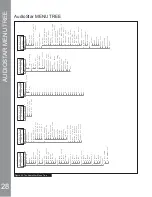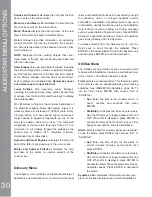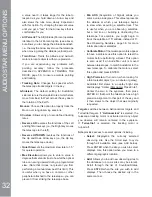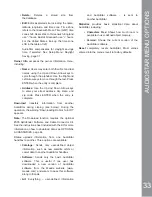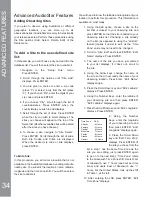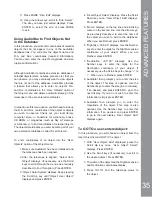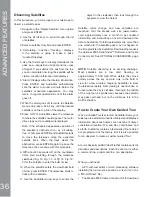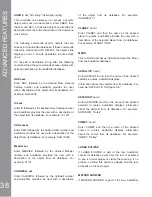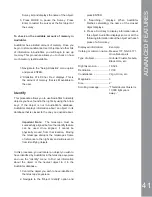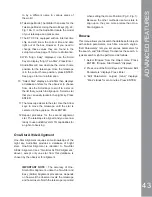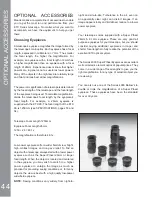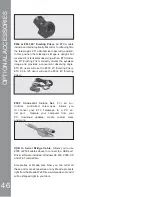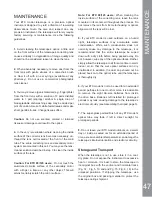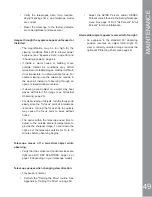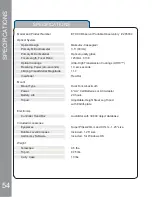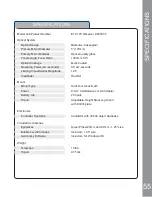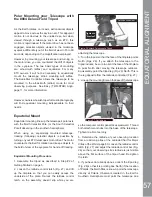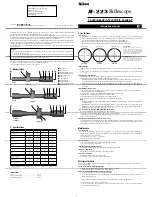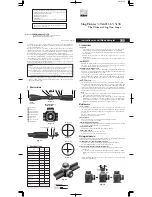
42
Advanced Alt/Az Alignment
If you would rather choose your own alignment
stars from the AudioStar database during the Alt/Az
alignment procedure, AudioStar offers two methods
described below.
Two-Star Alt/Az Alignment
Two-Star Alignment requires some knowledge of the
night sky. AudioStar provides a database of bright
stars and two stars from this database are chosen by
the observer for alignment.
1. Turn the telescope on: Turn the telescope
power switch to the ON position. The AudioStar
beeps and the display screen is activated.
AudioStar then takes a few moments to start
up the system.
2. Select Alignment Procedure: “Press 0 to Align
or Mode for Menu” displays. Press “Mode” to
access the AudioStar menu.
3. Testing Motors: The telescope then tests the
motor function of the telescope by moving in
the horizontal and vertical directions.
4. Set Your Location or Zip Code: The Location
screen displays. This screen asks you if you
wish to choose either the zip code of your
observing location or the location (i.e., entering
the city and state or country of your observing
location). Press “1” to select the zip code option
or “2” to enter the city and state.
Note:
The location settings (country/state/
province and city, or zip code) are only asked
IRUWKH¿UVWWLPH\RXWXUQRQWKHFRQWUROSDQHO
If you wish to change this setting later on, use
the Site menu. See SITE, page 32 for more
information.
A. If you chose the zip code option, the left most
“0” is highlighted. Use the Number keys to enter
the digits. As you enter a digit, the next digit to
the right will be highlighted. Enter the next digit.
Repeat this process until all 5 digits of your zip
code are entered. Press ENTER.
B. If you chose the location option, the next
screen asks for the country or state/province
(listed alphabetically) of the observing site.
C. Use the Scroll keys to scroll through the list of
countries, states, and provinces. Press ENTER
when the correct location displays.
D.
The next screen asks for the city (listed
alphabetically) closest to the observing site.
Use the Scroll keys to scroll through the list
of cities. Press ENTER when the correct city
appears on screen.
5. Daylight Savings Time: The next screen
requests the status of Daylight Savings Time.
If Daylight Savings Time is active, press the
1 key. If Daylight Savings Time is not active,
press the 2 key.
Note: Daylight Savings Time may be referred
Too Much Power?
Can you ever have too much power? If the
type of power you’re referring to is eyepiece
PDJQL¿FDWLRQ \HV \RX FDQ 7KH PRVW
common mistake of the beginning observer
is to “overpower” a telescope by using high
PDJQL¿FDWLRQV ZKLFK WKH WHOHVFRSH¶V DSHUWXUH
and atmospheric conditions cannot reasonably
support. Keep in mind that a smaller, but bright
and well-resolved image is far superior to one
that is larger, but dim and poorly resolved (see
Figs. 23a and 23b below). Powers above 175x
should be employed only under the steadiest
atmospheric conditions.
Most observers should have three or four
additional eyepieces to achieve the full range of
UHDVRQDEOHPDJQL¿FDWLRQVSRVVLEOHZLWKWKH(7;
telescopes. See OPTIONAL ACCESSORIES,
page 44.
ETX OBSERVER TIPS
Figs. 23a & 23b: Jupiter; examples of the right amount of
PDJQL¿FDWLRQDQGWRRPXFKPDJQL¿FDWLRQ
ADV
A
NCED FEA
T
URES

